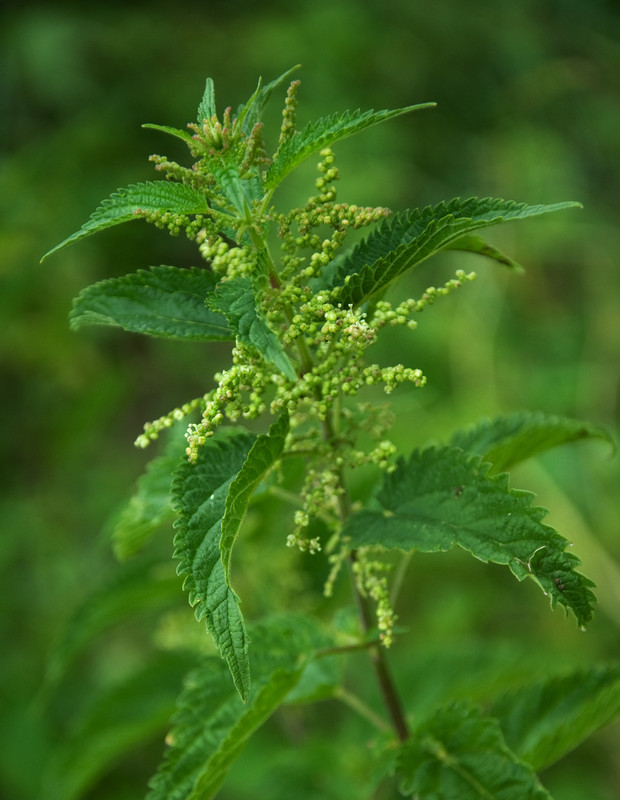Stinging nettle is a perennial plant. Skin contact with stinging nettle commonly causes welts.
Botanical name: Urtica dioica; a related plant is burning nettle or small nettle (Utica urens)
Organic Weed Control at Amazon
- Monterey Vegetable Pre-Emergent Weed Control
- Homietina Heavy Duty Weed Barrier Fabric 4×300-feet
- Preen Natural Vegetable Garden Weed Preventer
- Green Gobbler 20% Vinegar Weed and Grass Killer
- WeedGuard Plus Biodegradable Paper Weed Barrier

Stinging nettle description and life cycle
- Grows from 2 to 6 feet tall.
- Spreads by underground stems or rhizomes form dense colonies.
- Stems are erect, four-angled, and bristled.
- Leaves to 6 inches long; usually long stinging hairs and bristles.
- Hairs on leaves contain formic acid which stings and burns bare skin.
- Oval to slightly heart-shaped leaves with coarsely toothed margins are opposite each other on the stem.
- Stipules on leaves are large.
- Small green flowers grow in panicled spikes.
- Grayish-brown fruits.
- Blooms early summer to late summer.
- Prefers moist, shaded sites.
Stinging nettle root system
Stinging nettle has an extensive underground root system of rhizomes that can spread more than 5 feet in a season. Fibrous roots are produced along the rhizomes. New plants can be established from rhizome fragments. Stinging nettle often grows in dense colonies.
Stinging nettle organic control
- Mow or cut young plants to keep them from growing up.
- Dig the plant out root and all using a sharp spade. Wear protective clothing and gloves. Avoid touching the plant.
- Rhizomes must be removed; otherwise dense colonies of stinging nettle can spread.
- If plants re-emerge, continue to cut them down. Cutting a plant down just before it flowers will weaken it significantly as stored energy has moved to the top of the plant for blooming.
- When top growth is removed cover the site with heavy landscape fabric or cardboard topped with bark for one season.
- It may take several seasons to control the spreading nettle.
Stinging nettle range
The eastern half of the United States, except Florida; eastern Washington state, Idaho, Colorado, and into northern Texas. Southern Canada.
Four quick ways to control weeds
- Weed early. Control weeds in the first month after they germinate.
- Weed often. Hand weed every two weeks through the season.
- Weed by hand when the soil is wet (best to get roots).
- Use a hoe if the soil is dry. Decapitate weeds before they flower and drop seed.
Related articles:
Vegetable Garden Organic Weed Control
Vegetable Garden Organic Pest Control
Vegetable Garden Diseases Problem Solver
Garden Planning Books at Amazon:
- Vegetable Garden Almanac & Planner
- Kitchen Garden Grower’s Guide Vegetable Encyclopedia
- Vegetable Garden Grower’s Guide
- Tomato Grower’s Answer Book



